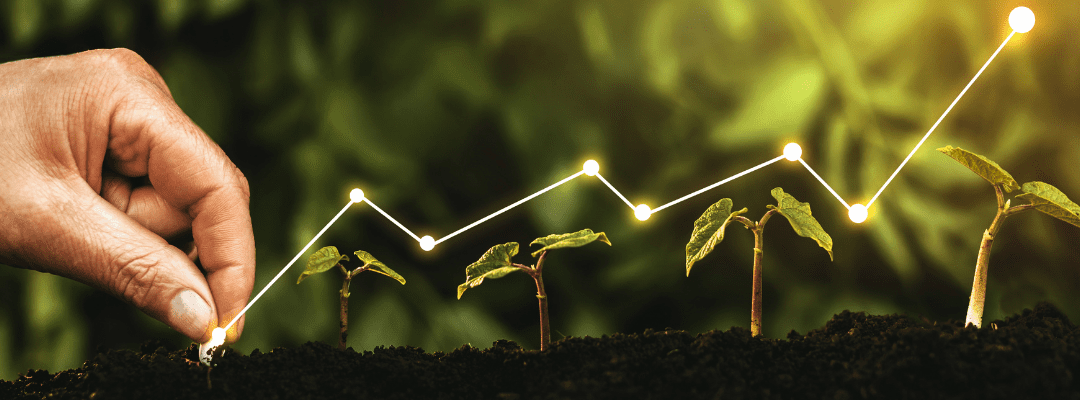As we look to the future of agriculture, there’s one thing for sure: pushing the boundaries of agricultural practices to solve the toughest problems facing our food systems will continue to be standard.
There are several big challenges facing the industry today. This season’s unprecedented drought conditions; in fact, growers haven’t seen conditions like this since 1988 – and with minimal rain in the forecast, one can only wonder what the impact will be on this season’s productivity.
Weeds management continues to be an issue that needs to be solved, particularly as changing weather patterns continue to impact how and where weeds are growing. (And this season – limited efficacy of pre-emergence herbicides given drought conditions.)
Technology continues to be a driver for key stakeholders in research and product development, retail ag, and growers; but getting wide-scale adoption has been, and continues to be, a challenge.
Even bigger than those unique challenges comes making sustainability initiatives a reality. Over the past several decades, sustainability has been essential to advancing agriculture. From eliminating greenhouse gas emissions to focusing on renewable energy to optimizing the supply chain with sustainable sourcing, sustainability touches every corner of our world in agriculture.
But, how do we make sustainability a reality without compromising the bottom line? Or does it become a promise for future generations?
The Realities of Sustainable Agriculture: The Challenges We Face
While significant strides have been made towards sustainable agriculture practices, several key challenges persist, hindering widespread adoption and implementation. After all, implementing sustainable practices across diverse geographic regions, crop types, and production systems requires significant coordination, investment, and education.
Take regenerative agriculture, for example. This practice of building soil health by focusing on using better tillage practices; protecting soil to reduce the impact of erosion; and keeping plants rooted in the soil for as long as possible has been proven to improve soil health, and thus, enhance overall yields. But the practice of standardizing and implementing it across vast areas can be quite complex; which can be daunting and cost prohibitive, especially as organizations focus on other critical initiatives.
And, there aren’t many supply chains more complex than that in agriculture. From growers and suppliers to distributors and retailers, there are many stakeholders critical to an efficient supply chain. Ensuring sustainability across the entire supply chain presents challenges such as traceability, responsible sourcing, and aligning the practices and standards of these various stakeholders. Collaboration and transparency are essential to address these challenges and drive sustainability throughout the supply chain.
Beyond new practices, there are also the factors that are outside of our control, too. As we’ve experienced this season, extreme weather poses significant challenges on how we manage resources and thus, focus on implementing sustainable strategies. Responding to these types of challenges can shift priorities, which may offer some short-term gains, but impact long-term outcomes over time.
Rethinking Sustainability’s Role in Profitability
Understanding how sustainability impacts profitability has been a core question for agriscience for years. After all, sustainability makes sense – it preserves our world for future generations – but does it make cents?
In all seriousness, sustainability and profitability have been separate initiatives – with sustainability often thought to impede profitability. However, it can be a catalyst in driving profitability because of the immense value that it can unlock for an organization. From delivering efficiency to mitigating risk and driving R&D to enhancing employee engagement and retention, the impact of sustainability goes beyond improving how we manage natural resources.
By turning a corner on linking profitability and sustainability, it encourages organizations to think outside the box and foster a culture of innovation. This can result in more of a focus on R&D, with an emphasis on creating cutting-edge solutions that open the doors to new markets and revenue streams. This is important – especially in analyzing a few product lines that are being constricted due to changing market dynamics. Building sustainability into the evolution of these products can transform how they’re used and become core to sustainability initiatives, while speaking to profitability goals as well.
An example that aligns well with this theory is weeds management. This continues to be one of the biggest challenges for our industry. For years, the same chemical formulations have worked well – eradicating weeds and preventing crop loss. But, in recent years, increasing regulatory requirements combined with patent expirations and generic solutions, means that agriscience needs a different solution for success to protect its bottom line.
And, this solution means a different way to bring herbicide solutions to market. From commercialization to distribution, there’s an immense opportunity to build sustainability into the core of product development to make it less daunting and more attainable.
What would this look like? Imagine a world where, as part of the herbicide solution that the grower would purchase, it includes a drone flight. This flight takes place at the grower’s discretion; as close to emergence of weeds in the field (which can also be predicted based on different variables, like weather and soil conditions).
Once captured, an advanced data science ecosystem translates the imagery into detailed plant-level measurements and insights to understand where weed pressure exists. This data is then used to build a prescription – one that focuses the herbicide application where it needs to be, rather than blanketing an entire field.
Once the herbicide is applied, the grower can then choose to have a drone come and fly again to capture imagery and understand where weed pressure may still exist – helping to inform end-of-season yield estimates and providing guidance for future seasons on where herbicide may be most useful.
For the herbicide manufacturer, the solution becomes more than chemistry – it includes a data layer that delivers immense value by uncovering where herbicide should be applied. And for the grower, they can drive their own profitability with a more cost-efficient solution (spraying where it needs to be sprayed) while preventing crop loss by treating weeds where it matters most.
The value of this data doesn’t stop there – it can become core to future product development by creating agronomic models to inform decisions to be made in the present, while delivering predictive analytics for the future.
Connecting Technology, Sustainability and Profitability
In recent years, machine learning and artificial intelligence have become more widely adopted in technology – but the inflection point hasn’t been hit quite yet.
Understanding the role that technology has in driving sustainability initiatives forward; and how both technology and sustainability play a role in profitability for large agriscience organizations, now and the in the future, are important to augment development.
So, how do we get there? It starts with incremental steps towards the future – a future where technology becomes part of the product distribution and commercialization strategy.
Today, this includes leveraging technology where possible; whether it’s generating plant-level measurements from high-resolution aerial imagery to validate research trials or using multispectral indices to validate product performance. Digital product development can accelerate today’s product development, by adding in that essential layer of data and analytics as part of the product itself.
In doing so, it’ll demonstrate the efficiency, productivity, and profitability gains from technology – all while supporting broad sustainability initiatives and making them a reality, not only for future generations, but for our world today.


